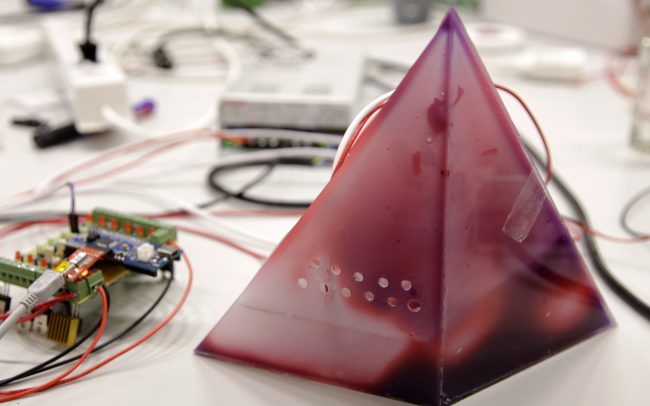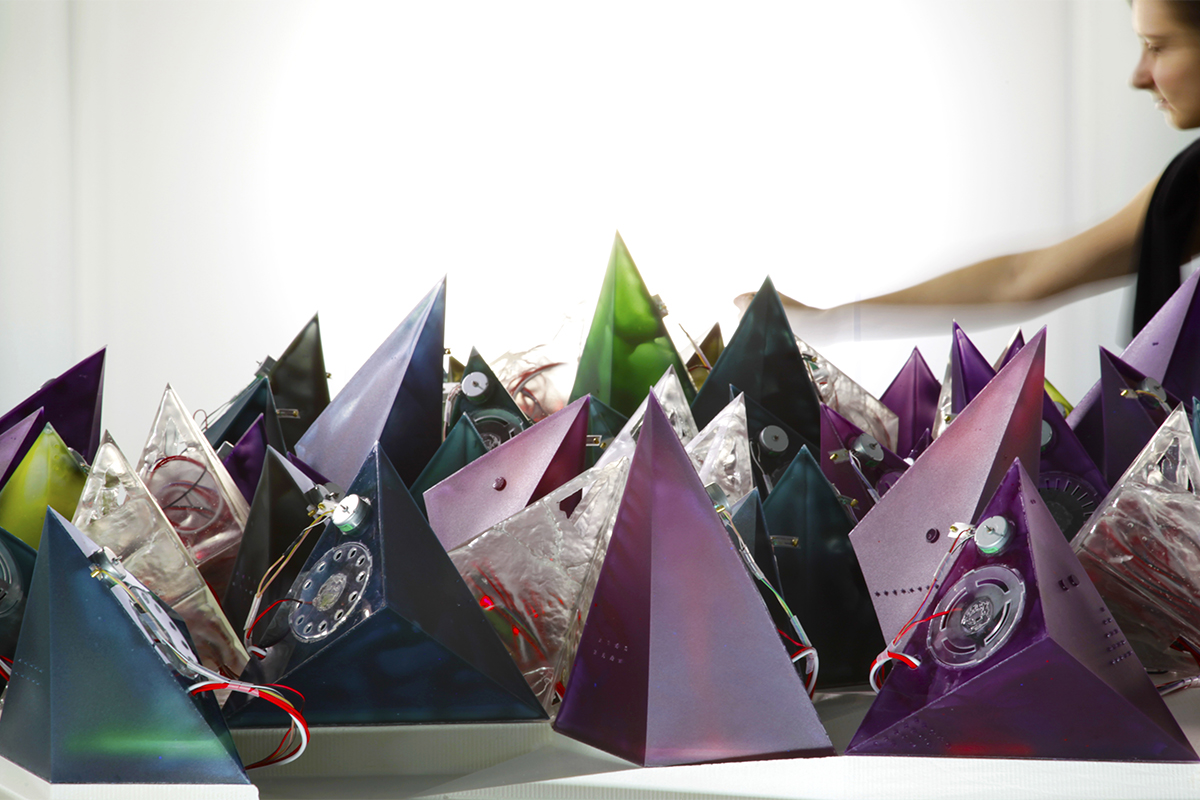an ecology of color-changing elements
Resinance was part of an ongoing series, exploring the potential use of smart materials in an architectural context. It was realized in March 2013 by the Master of Advanced Studies class at the Chair for CAAD.
The design of ‘Resinance’ was strongly influenced by the behavior of simple organic life forms, in particular the formation of cellular colonies. In its assembly it represented an ecology of functional units that could both work autonomously but also in coordination with their neighboring units. It consisted of 40 active elements that were gradually changing their surface color in response to human touch. While this slow transformation as such couldn’t immediately be perceived, each device had a second actuator, providing direct response through shivers and vibrations. Every four elements were connected through a control unit that formally resembled the rest of the objects but without the ability to change color. These units both choreographed the behavior of the particular cluster and transmitted the current state of each element to its neighbors. Therefore the tactile input not only changed the touched element but was transmitted throughout the whole installation in a networked, swarm like behavior.













